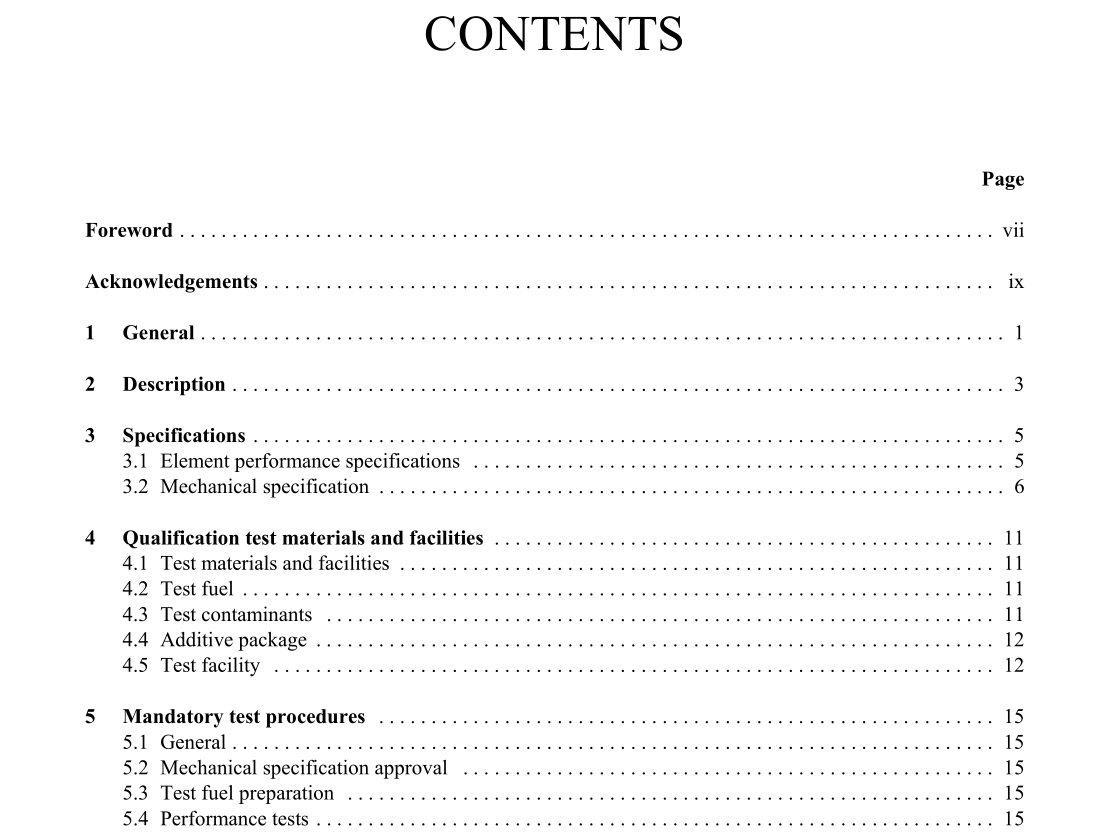API Spec 1590 pdf download

API Spec 1590 pdf download.SPECIFICATIONS AND QUALIFICATION PROCEDURES FOR AVIATION FUEL MICROFILTERS
3.1.3 Flow rate Elements with a nominal 150 mm (nominal 6 in.) outside diameter shall meet the performance specification at a minimum flow rate of 10 l/sec/m of effective media length (equivalent to 6 l/min/cm or approximately 4 US Gal./min/in). Manufacturers may qualify elements at higher flow rates if they wish. Note: This flow rate is specified for qualification purposes only. Since element life in a given application is a function of both dirt loading and flow rate, it is recommended that the purchaser consult with the microfilter supplier to establish the optimum flow rate/vessel size for that application. For elements with outside diameters different to that specified above it is not possible to prescribe a minimum qualification flow rate. Manufacturers offering such equipment are advised to qualify at a flow rate maximised for the level of influent dirt indicated in 5.4. 3.1.4 Differential pressure The manufacturer shall state the average differential pressure across a new element operating at the qualification flow rate with clean, dry fuel in technical literature intended to communicate differential pressure based change out requirements.3.1.5 Fluid compatibility of elements The requirements of this publication for compatibility testing (Run 5) are: (a) The difference in existent gum between the blank run and element run shall be no greater than 8 mg/100 cm 3 . If the difference between the initial blank and the blank after the second 336 hour soak period is greater than 8 mg/100 cm 3 then the whole compatibility test run shall be repeated. (b) The water interface rating shall be no greater than 1b. (c) Any colour decrease shall be no greater than 4 Saybolt colour units compared with the blank measured after the total soak time period. (d) There shall be no visual change in the test element. 3.1.6 Structural strength of elements The filter element shall be capable of withstanding a differential pressure of 500 kPa (72,5 psi) (Element structural test, 5.4.6) without element rupture, collapse or bypassing of seals. 3.1.7 Structural integrity Filter elements shall meet Run 1-5 performance tests without showing indications of media or structural deterioration as evaluated by the critical examinations specified in Section 5.
3.2 MECHANICAL SPECIFICATION
3.2.1 General Final acceptance of the microfilter element depends upon its satisfactory functioning during the performance tests described in later sections. New microfilter vessels shall meet the mechanical requirements contained in 3.2.3 and 3.2.4. Where the purchaser specifies low temperature operability, the manufacturer shall guarantee elements for operation within the temperature range !50 EC to +70 EC (!65 EF to +160 EF). 3.2.2 Design and construction of elements 3.2.2.1 Element sealing Element-to-mounting-adapter and adapter-to-vessel sealing arrangements shall provide a positive, non- leaking seal against specified design and shock pressures. Methods used will depend on the element design but will include the following: (a) A flat-base gasket seating against a blunted V-type knife-edge. The height of the V section shall be 1,5 mm (0,06 in.) + 10 % / ! 0 % (centre rod installation). (b) Compressed internal ring joint or O-ring (for axial contact threaded base installation). (c) Internal O-ring (for radial contact ‘push-on’ installation). 3.2.2.2 Materials of construction All metal parts in contact with the fuel shall be free of zinc, cadmium and copper. Metal components of elements shall be non-corroding. All materials shall be chemically compatible with the fuel. The element media, gaskets and sealing materials shall not deteriorate on exposure to fresh or salt waters. All seals shall be of Viton A, Buna N or equivalent. Under no circumstances is cork or rubber-impregnated cork an acceptable substitute. 3.2.2.3 Element identification Each individual element shall be permanently marked with the manufacturer’s symbol, element model number and/or the nominal rating of the element (in µm) and the date of manufacture. Where possible, the identity of the element should be located so that it can easily be seen when installed in the vessel.









